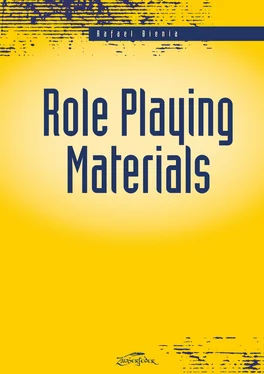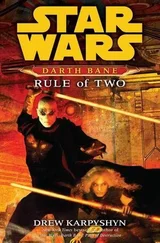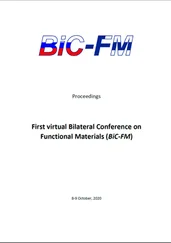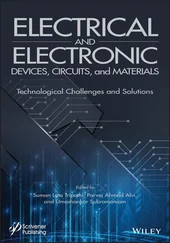My thanks towards the national Research School for Media Studies (RMeS) and the former director José van Dijk. The Winter and Summer Schools have always been an invigorating experience of discussing and learning more about the work of my fellow Ph.D. colleagues in the Netherlands. Presenting my own work was a great chance to receive constructive feedback. Thanks above all to Alex Gekker, Nils Kerssens, Lela Mosemghvdlishvili, Birte Schohaus, Rik Smit for your pleasant and stimulating company. Taking part in the research school activities showed me different universities in the Netherlands.
In the past years, my travels went beyond the Netherlands. A big thank you to my colleagues for their constructive feedback throughout the years: Benjamin Beil, J.T. Harviainen, Nathan Hook, Jonas Linderoth, Michał Mochocki, Torill Mortensen, Jan Salge, Jaakko Stenros, and Annika Waern.
Thanks to the publishers of my first articles and books: Benjamin Beil and Thomas Hensel, Benjamin Bigl and Sebastian Stoppe, Sarah Lynne Bowman, Andrea Castellani, Sebastian Deterding and José Zagal, Karsten Dombrowski, Evan Torner, and Jutta Zaremba. Also thanks to Gerke Schlickmann for co-editing the MittelPunkt books with me.
I want to thank the communities of role playing for joining me in my field work, letting me play with them, their countless conversations, help, and interest in my work. Beside my interviewees (see Appendix B), I want to thank Mercedes Buyala, Michael Hess, and Matthias Trennheuser. Above all, my thanks to all of you who have made it possible for me to go to Alcyon XVI : Frances Arndt, Maria Angelika De Barros-Alves, Bastian Heer, Kelric, Julia Kieper, Flo Krell, Lu, Nummi, Franzi Schöttner, Max Stark, and my larp brothers Martin Strzodka and Mike Tascona.
To my office mates. Eli’s calm attitude was the right antidote to my somewhat cliché nervousness of a Ph.D. candidate. You had always a moment to talk and our family meetings will be kept dear in our memories. Two years later, Assem moved in. I am grateful for your company and the many talks we had about coffee, sports, politics, and religious studies.
To Peter Waldmann who had always faith in me as a scholar. I tried to follow your example of a teacher during my time in Maastricht.
To Thomas Hensel who took care of my first steps as a Ph.D. candidate and who linked me to ANT at University of Siegen.
To my family. Thanks to my parents for your support and faith in my curiosity from early on. Thanks to my brother for your support and your special way to make this world a piece of art.
To my wife. Thank you for this better life. Without your right words at the right time, I would not have applied to what seemed and became the most spectacular job I have ever had so far. Thank you for your support during these long years.
This network does not end here and I want to thank all future readers for their interest.
Towards the end of his commencement speech at the University of Arts in Philadelphia, author Neil Gaiman shared a trick that reminded me of role playing:
Someone asked me recently how to do something she thought was going to be difficult, in this case recording an audio book, and I suggested she pretend that she was someone who could do it. Not pretend to do it, but pretend she was someone who could. She put up a notice to this effect on the studio wall, and she said it helped. (2012)
Gaiman’s trick is similar to role playing, because it involves a task and two specific stages in how to solve it. If the example was a role-playing game, the audio book would be the goal of the game. At the first stage, the player would imagine a character with the necessary production skills. At the second stage, the player would pretend to be the producer recording the audio book.
The difference between Gaiman’s trick and role playing is that role playing does not necessarily aim to solve creative tasks or to make art. Role playing is a hobby for people who enjoy imagining and exploring characters who are challenged with invented tasks in fictional worlds. Imagine a person dressed up as a wizard running through thorn bushes at night. On his trail, a group of yelling cultists. They chant in an unearthly language to call upon their foul god. Iä! Iä! Iä! The wizard character tumbles, because I as the player want the situation to escalate. Quickly, he is surrounded by three men and women in gray robes – actually the color is green, but it is dark. I cannot read their faces, so I have to expect the worst. What would you do in the shoes of this wizard? Cast a spell of attack? Cast a spell of protection? Surrender? Run again? If you stop reading this book for a second and imagine the situation to decide what the wizard would do, you are role-playing, because you pretend to be someone else and act according to this character.
This wizard example is one role-playing situation that I have experienced in the past five years of research. The fictional world was a fantasy world inhabited by wizards, cultists, and magic spells. My character’s task was to escape the three robed figures. As it was a game, the game rules offered several ways in which my character could interact with his world. What happened then? I decided to attack one of the cultists with a spell, but at the moment when I was casting the words, the cultists beat me down. I let my character fall and lie for an hour on the spot until my fellow players found me. This happened back in 2011, but I still tell the wizard’s story.
This example resonates with the definitions of role playing in the field of role-playing game studies. Heliö (2004) defines role-playing games as “games that offer implied motivation for creating narrative experiences,” such as the task of recording an audio book, “and encouraging players to tell stories about them” (p. 72). Role playing is a mindset, a mental process, which players can add to any game (Heliö, 2004). Heliö’s definition explains Gaiman’s trick as role playing, because the elements are the same. Role playing is an activity that includes the following elements. Narrative elements, such as character and world, describe what happens. Goals and rules are ludic elements that structure how it might happen. Together, narrative and ludic elements set up the activity as a game that challenges the character in the imagined world.
Gaiman’s trick hints at a third group of elements that definitions of role playing miss (Heliö, 2004; Hitchens & Drachen, 2009; Montola, 2012a). While role playing an audio book producer, she “put up a notice to this effect on the studio wall, and she said it helped” (Gaiman, 2012). The notice and the studio wall form the third group: material elements. The group includes materials, such as the paper notice, the studio wall, or game materials that are part of a role-playing game.
By taking material elements into view, this dissertation explores an alternative understanding of how role playing works, because it is insufficient to understand role playing as a mindset or a social process between players alone (Heliö, 2004; Montola, 2012a). Role playing emerges in and by a group of heterogeneous elements. The process includes social relations between narrative, ludic, and material elements. This understanding of role playing challenges previous understandings on two levels. It is not enough to merely add a further element, in this case material, and expand the understanding on one ontological level. The understanding of role playing as a process that works in and by a group of elements demands rethinking what role playing is. I have to consider multiple ontologies, because it is insufficient to examine one ontology centered on players. If role playing emerges from the working of heterogeneous elements, how do these diverse elements collaborate? This encourages an investigation of the epistemological level, too. The epistemological question of how to know what role playing is, expands preconceived notions that define role playing as a mental process caused by players, because it requires studying collaborating elements not as post hoc phenomena but as they occur. Thus, it is necessary to examine materials in the process of relating to narrative and ludic elements.
Читать дальше












